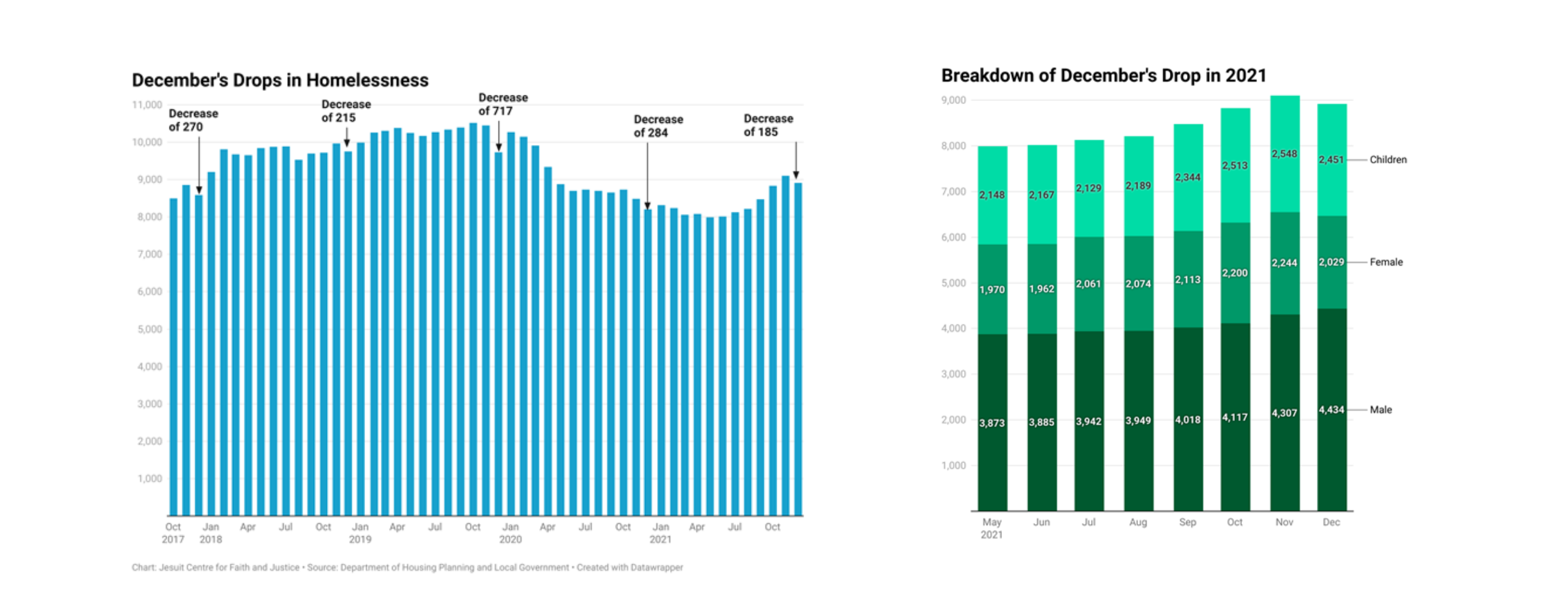
At the beginning of February 2020 we published a blog post about the ad-hoc reclassification of homeless figures and the seasonal trend of homelessness numbers decreasing each December. We were cautious so as not to read too much into a trend of only three years, and said at the time:
“There is no clear answer as to what causes this trend … one explanation might simply be based on compassion; landlords are human too and they don’t want to evict people over the Christmas period. This explanation satisfies Occam’s Razor and helps to explain why the numbers rebound to an even greater degree in January.”
But now that we have observed the trend of the seasonal decrease for five years (2017-2021), we know that the drop in homelessness that occurs each December is an aberration, not a cause for optimism. We have to dig deeper into the available data to account for it, and to solve the conundrum of the strong rebound in homelessness which inevitably follows it in January.
An additional grace period by landlords who have served notices to quit is likely still a factor in the drop. Compassion over the festive period would stay the eviction. However, when we take a look at the period up to December 2021, we see something different happening. As the homeless numbers increase during the year, until November, the proportions of the three main groupings—male adults, female adults and children—remain consistent. But, in December, when the overall numbers decreased, we see that the number of male adults increases while females and children account for the largest decrease. In fact, while the overall numbers only decreased by 185, the decrease for females and children was a total of 312.
What are we to make of this? Before we assess it, it is helpful to note two things. Firstly, the count for December 2021 occurred over a seven-day period between the 20th and 26th of the month; the most festive period. Secondly, more families and children are spending longer in emergency accommodation. A subsequent blog post on the topic in early 2021 found that a quarter of families and a third of children were remaining homeless for more than two years.
The incidence of male homelessness rising in December shows that evictions are still occurring and people are still becoming homeless over the Christmas season. But I suspect that the very real desire to have a ‘normal’ family Christmas and time away from emergency accommodation is what is causing the December drops. It is possible that family rifts and fractured relationships can be put on pause for the sake of children and grandchildren. It appears as if most of the families who leave emergency accommodation over Christmas are single-parent families based on the observation of only children and adult females decreasing. This could be more accurately discerned if the official reports recommenced collating data on single-parent families.
For five years now, every drop in the homelessness figures in December has been followed by a rebound in January. As the overall trend of homelessness continues to increase and with no evidence of an appetite for an eviction ban in the coalition Government, there is little to suggest that this year will be different.

